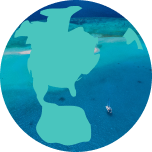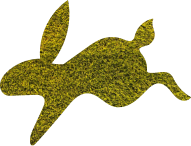
Adult Cradle Cap: Information, Treatment, And More
Cradle cap sounds like something only babies get. But, if you’re dealing with a flaky scalp, yellowish scales, and red skin, you’re probably up against a case of adult cradle cap, also known as dandruff.
While adult cradle cap is common and not dangerous, nobody wants it! We get it.
At Babo Botanicals, we love to provide effective, natural skincare solutions for you and your family!
In this article, we’ll explain what cradle cap is, talk briefly about baby cradle cap and how to treat your little one, and then go over adult cradle cap symptoms, natural treatments, and shampoos.
What is Cradle Cap?
Cradle cap is a skin rash that usually affects newborn babies, although it can affect people of any age. In older children and adults, it’s more generally known as dandruff.
If your baby has dry skin and scalp problems, it’s probably cradle cap and is extremely common and easily treatable, so don’t panic!
Cradle cap can also affect the areas behind the ears, forehead, and other parts of the body. The condition usually presents as red or yellow flaky and irritated looking skin.
Now, let’s go into more detail about cradle cap in babies versus adults and what you can do about it!
Cradle Cap In Babies

In babies, cradle cap shows up as dry, flaky patches on their head. The patches aren’t itchy or contagious, and they can be treated with various home remedies.
The cause of cradle cap isn’t really known. Some doctors think the condition is caused by overactive oil glands or by a fungal infection. Cradle cap is not caused by poor hygiene and is not contagious.
Baby Cradle Cap Treatment
Cradle cap is easily treatable and there are a variety of cradle cap remedies that can be tried at home.
Cradle cap treatment is pretty straightforward, but if the condition doesn’t go away or you’re concerned about your baby, please contact your doctor for other options that could help to resolve the problem.
Here are some treatments you can try at home that should help the cradle cap symptoms subside.
- Gently massage your baby’s scalp with your fingers and/or a soft brush to loosen dry and scaly skin. You can do this before and after shampooing.
- Apply a small amount of an emollient to loosen the scaly patches. We recommend Babo Botanicals’s Sensitive Baby All Natural Healing Ointment. This do-it-all ointment is made with colloidal oatmeal to soothe everything from bug bites and poison ivy to eczema and dry skin.
- Shampoo your baby’s head daily or as needed with a mild baby shampoo (unless your doctor recommends something stronger) and be sure to rinse out all the shampoo and soap from the scalp and hair and dry with a soft towel.
- Repeat the process until the skin irritation is gone.
If you seem to have your baby’s cradle cap under control, do the following to help keep it at bay:
- Use your fingers or a soft-bristled cradle cap brush and gently massage your baby’s scalp to help prevent the build-up of scaly skin.
- Wash your baby’s head daily or as needed, making sure to rinse all of the soap or baby shampoo away from the scalp.
Cradle Cap Shampoo

With all the baby shampoos out on the market, it can be difficult to know what shampoo will work best for you and your baby. It’s important to find one that is gentle on your little one’s sweet, sensitive skin as well as effective at cleansing and soothing their scalp.
Newborn Foam Wash And Shampoo
For your tiniest one, try Babo Botanicals' Sensitive Newborn Foam Baby Wash. This fragrance-free, EWG Verified™, sensitive-skin formula is perfect for delicate newborn skin and can be used on their body as well as their scalp and hair.
It contains shea and cocoa butter to help moisturize and soothe your baby’s skin and prevent and treat cradle cap, too.
Moisturizing Shampoo

Another option is Babo Botanicals’s Moisturizing Shampoo & Wash with Oat and Calendula. It’s our #1 best-selling product, specially formulated with calendula oil to help calm and soothe scalps with cradle cap or dry skin.
This gentle shampoo is rich in antioxidants and vitamins and leaves your baby with a headful of soft, smooth, and shiny hair.
Now that we’ve covered how to spot and treat baby cradle cap, let’s move on to adult cradle cap.
Cradle Cap in Adults

Cradle cap can happen in adults as well and can be caused by stress, hormones or illness, and other skin conditions.
The scientific name for adult cradle cap is seborrheic dermatitis. But, like we mentioned earlier, you probably know it better as dandruff. Yep, that’s all it is.
The cause of seborrheic dermatitis is not completely clear but may involve an inflammatory reaction to a yeast naturally present on the skin surface. But you can rest easy — what is clear is that adult cradle cap is not caused by poor hygiene.
And, just like cradle cap in babies, adult cradle cap is not contagious.

What does adult cradle cap look like? It will show up as yellowish scales, red skin, and dandruff. And, guys, that flaky dandruff can also show up in your mustache and beard.
Seborrheic dermatitis can also occur on the ears, eyebrows, the bridge and sides of the nose, in the crease between the nose and lip, and central chest.
Symptoms may come and go and may be worse during particular seasons (e.g., during cold weather). Flares can also occur during periods of stress, hormonal changes, or illness.
What About Psoriasis?
All of that being said, you might be wondering how you can tell the difference between run-of-the-mill seborrheic dermatitis (adult cradle cap) and other skin conditions, like psoriasis.
Adult cradle cap is characterized by that annoying dandruff, while psoriasis often shows up as plaques on your skin.
However, some of the symptoms are similar, so if you’re not sure what skin issue you’re up against, make an appointment with your doctor or dermatologist. They’ll tell you what your treatment options are, which can be different for each condition.
Natural Adult Cradle Cap Treatment

That brings us to what you really want to know: how to treat your flaky adult cradle cap.
There are a number of medicated shampoos on the market, but here at Babo Botanicals, we like to keep things as natural as possible for you and your family!
You and your doc should decide together what’s best for you, but we’ve listed a few gentle, natural ways to deal with adult cradle cap below.
Manage Your Environment
Minimizing stress (or at least handling stress well!) and staying healthy overall may help reduce your adult cradle cap. Getting outside for some sun can also help minimize dandruff.
If you do go out in the sun, stay away from sunbathing and stick with sun exposure via fun outdoor activities. And, of course, always apply a safe sunscreen made with zinc oxide like Babo Botanicals’s Clear Zinc Sunscreen Lotion SPF 30.
We know it’s easier said than done, but adjusting your diet, reducing stress, and being aware of how the weather affects your skin can aid you in keeping your dandruff under control.
Apply Coconut Oil
Because natural coconut oil contains medium-chain fatty acids, including lauric acid and capric acid, it has strong antiviral, antimicrobial, and antifungal properties.
Coconut oil applied to the skin has been shown to help reduce excess yeast, microbes, and fungus that can lead to irritation, too much oiliness, or dryness.
Apply coconut oil directly to your scaly scalp, or find a shampoo that contains this amazing oil. Just know that if you put it on your scalp, you’ll quickly end up with oily hair!
If this is especially bothersome to you, simply let your scalp reap the benefits for 30 minutes or an hour and then hop in the shower to shampoo your hair.
You can also try our Miracle Moisturizing Face Cream, which contains coconut oil and is gently formulated for sensitive and extra dry skin.

Use Essential Oils
Even better, use coconut oil on the skin along with soothing essential oils — like cedarwood oil, lemongrass, tea tree oil, rosemary, and lavender.
Tea tree oil, in particular, has been used to help relieve seborrheic dermatitis, and you can even mix these oils into a mild, sulfate-free shampoo. Or, with Babo Botanicals, you can make things easy and use a shampoo that already contains the goodness of tea tree oil.
That brings us to the next important point: adult cradle cap shampoo.
Adult Cradle Cap Shampoo
We just talked about using coconut oil to face adult cradle cap head-on. Here is our shampoo recommendation to gently and effectively clean and soothe your scalp.
Shampoo With Aloe Vera And Coconut Oil

Aloe vera is known for its moisturizing and anti-inflammatory properties (which is why it feels so good after a sunburn!) and there is thought that it could improve adult dandruff. And, of course, coconut oil provides great benefits for your flaky scalp.
For a shampoo with both aloe vera and coconut oil, try Babo Botanicals’s Swim & Sport Shampoo & Wash.
This purifying shampoo also contains cucumber to moisturize and comfort your scalp and skin. That makes it great to use after a day at the pool or beach, or every day!
For more ways to care for your hair during swim season, check out our article here.
Keep Adult Cradle Cap Under Control

Babies with cradle cap typically grow out of it in a few months. However, if you have adult cradle cap (or dandruff), you probably already know that it can be stubborn. It may come and go for your whole life.
The good news is that there are ways to naturally keep it under control!
When you wash your hair, use products with coconut oil and scalp-healthy essential oils, like Babo Botanicals’s Swim & Sport Shampoo & Wash. And do what you can to minimize stress, stay healthy overall, and be aware of how the weather affects your skin.
With the right care, you’ll be able to manage your dandruff and get on with your life!





